MeLE has recently released a passive mini PC called the Quieter2. What is particularly interesting is that whilst it only has a low-powered Intel Celeron CPU it also supports an M.2 2280 NVMe SSD drive which theoretically makes using an eGPU possible. MeLE provided a 99% discount coupon so that I could purchase one for review and the results from various testing are detailed below.
Hardware Overview
The Quieter2 physically consists of a 131 x 81 x 18.3mm (5.16 x 3.19 x 0.72 inches) rectangular plastic case with a metal base plate. The top half of the case is finely grooved to mimic the fins of a heat spreader but is made of plastic rather than metal to allow reception to the WiFi antennas as one is directly connected to it. As a passively cooled mini PC, it uses Intel’s 14 nm J4125 Gemini Lake Refresh processor which is a quad-core 4-thread 2.00 GHz processor boosting to 2.70 GHz with Intel’s UHD Graphics 600.
The front panel has just the power button whilst the rear panel includes a USB 3.0 port, a headphone jack, a micro-SD card slot, two HDMI ports, a Type-C USB port for power, and a gigabit Ethernet port. The left panel has a Kensington security slot and the right panel has three more USB 3.0 ports.
The review model included a soldered-on 128GB eMMC drive and soldered-on 8GB DDR4 2133MHz memory:
Additionally, there is soldered-on WiFi 5 (or 802.11ac) as well as the ability to add an additional M.2 2280 SATA or NVMe SSD drive:
The box specifications state:
Box contents
In the box, you get a power adapter and cord together with a plug adapter appropriate for your country, a quick start guide, and a thermal pad for applying to an M.2 drive. Optionally available for purchase is a VESA mounting bracket.
Review Methodology
When reviewing mini PCs, I typically look at their performance under both Windows and Linux (Ubuntu) and compare them against some of the more recently released mini PCs. Since the start of 2021, I review using Windows 10 version 20H2 and Ubuntu 20.04 LTS and test with a selection of commonly used Windows benchmarks and/or equivalents for Linux together with Thomas Kaiser’s ‘sbc-bench’ which is a small set of different CPU performance tests focusing on server performance when run on Ubuntu. I also use ‘Phoronix Test Suite’ and benchmark with the same set of tests on both Windows and Ubuntu for comparison purposes. On Ubuntu, I also compile the v5.4 Linux kernel using the default config as a test of performance using a real-world scenario.
Prior to benchmarking, I perform all necessary installations and updates to run the latest versions of both OSes. I also capture some basic details of the device for each OS.
Installation Issues
After installing and booting Ubuntu the ‘dmesg’ shows the error ‘ACPI Error: No handler for Region [ECF2]’ and the implications of this are unknown at this stage:
However also on Ubuntu, the audio did not work from the 3.5 mm headphone jack. Only HDMI was available as a sound option and nothing was detected or consequently changed when headphones were connected including nothing in ‘dmesg’ when connecting/disconnecting headphones:
Finally, in order to get WiFi working it is necessary to install an additional driver for the RTL8821CE module provided by Ubuntu’s ‘rtl8821ce-dkms’ package:
Also of note is that not all 5GHz frequencies are supported and those that can be used may be checked with the ‘iwlist frequency’ command:
Therefore, in order to connect to a 5GHz network, you might have to reconfigure your router to use one of the supported frequencies.
MeLE Quieter2 Review – Windows Performance
Initially, the Quieter2 comes installed with a licensed copy of Windows 10 Pro version 20H2 build 19042.685. After upgrading to version 20H2 build 19042.985 a quick look at the hardware information shows it is aligned to the specification:
A brief check showed working audio, micro-SD, Wi-Fi, Bluetooth and Ethernet.
I then set the power mode to ‘High performance’ and ran my (2021) standard set of benchmarking tools to look at performance under Windows:
For my specific set of Phoronix Test Suite tests the results were:
All these results can then be compared with other recent mini PCs:
The results are slightly lower when compared with other mini PCs using the same J4125 CPU. This is likely due to CPU throttling which is discussed further in the ‘Thermals’ section below.
MeLE Quieter2 Review – Ubuntu Performance
After shrinking the Windows partition in half and creating a new partition I installed Ubuntu using an Ubuntu 20.04.2 ISO as dual boot. After installation and updates a brief check showed working micro-SD, Wi-Fi, Bluetooth, and Ethernet however audio did not work from the 3.5 mm headphone jack as mentioned above.
The key hardware information under Ubuntu 20.04.2 is as follows:
|
1 2 3 4 5 6 7 8 9 10 11 12 13 14 15 16 17 18 19 20 21 22 23 24 25 26 27 28 29 30 31 32 33 34 35 36 37 38 39 40 41 42 43 44 45 46 47 48 49 50 51 52 53 54 55 56 57 58 59 60 61 62 63 64 65 66 67 68 69 70 71 72 73 74 75 76 77 78 79 80 81 82 83 84 85 86 87 88 89 90 91 92 93 94 95 96 97 98 99 100 101 102 103 104 105 106 107 108 109 110 111 112 113 114 115 116 117 118 119 120 121 122 123 124 125 126 127 128 129 130 131 132 133 134 135 136 137 138 139 140 141 142 143 144 145 146 147 148 149 150 151 152 153 154 155 156 157 158 159 160 161 162 163 164 165 166 167 168 169 170 171 172 173 174 175 176 177 178 179 180 181 182 183 184 185 186 187 188 189 190 191 192 193 194 195 196 197 198 199 200 201 202 203 204 205 206 207 208 209 210 211 212 213 214 215 216 217 218 219 220 221 222 223 224 225 226 227 228 229 230 231 232 233 234 |
linuxium@Quieter2:~$ lsb_release -a Distributor ID: Ubuntu Description: Ubuntu 20.04.2 LTS Release: 20.04 Codename: focal linuxium@Quieter2:~$ linuxium@Quieter2:~$ uname -a Linux Quieter2 5.8.0-53-generic #60~20.04.1-Ubuntu SMP Thu May 6 09:52:46 UTC 2021 x86_64 x86_64 x86_64 GNU/Linux linuxium@Quieter2:~$ linuxium@Quieter2:~$ inxi -Fc0 System: Host: Quieter2 Kernel: 5.8.0-53-generic x86_64 bits: 64 Desktop: Gnome 3.36.7 Distro: Ubuntu 20.04.2 LTS (Focal Fossa) Machine: Type: Mini-pc System: MeLE product: Quieter2 v: N/A serial: XXXXXXXXXXXXXXXX Mobo: MeLE model: Rev GMLR1 1.10 serial: N/A UEFI: American Megatrends v: 10.0 date: 04/01/2021 CPU: Topology: Quad Core model: Intel Celeron J4125 bits: 64 type: MCP L2 cache: 4096 KiB Speed: 2089 MHz min/max: 800/2700 MHz Core speeds (MHz): 1: 1978 2: 2234 3: 2366 4: 2650 Graphics: Device-1: Intel UHD Graphics 605 driver: i915 v: kernel Display: server: X.Org 1.20.9 driver: i915 resolution: 1920x1080~60Hz OpenGL: renderer: Mesa Intel UHD Graphics 600 (GLK 2) v: 4.6 Mesa 20.2.6 Audio: Device-1: Intel driver: snd_hda_intel Sound Server: ALSA v: k5.8.0-53-generic Network: Device-1: Realtek RTL8111/8168/8411 PCI Express Gigabit Ethernet driver: r8169 IF: enp2s0 state: up speed: 1000 Mbps duplex: full mac: xx:xx:xx:xx:xx:xx Device-2: Realtek RTL8821CE 802.11ac PCIe Wireless Network Adapter driver: rtl8821ce IF: wlp3s0 state: down mac: xx:xx:xx:xx:xx:xx Drives: Local Storage: total: 115.23 GiB used: 63.10 GiB (54.8%) ID-1: /dev/mmcblk0 model: 58K722 size: 115.23 GiB Partition: ID-1: / size: 56.02 GiB used: 18.54 GiB (33.1%) fs: ext4 dev: /dev/mmcblk0p5 Sensors: System Temperatures: cpu: 36.0 C mobo: N/A Fan Speeds (RPM): N/A Info: Processes: 214 Uptime: 43m Memory: 7.60 GiB used: 792.0 MiB (10.2%) Shell: new-review-test inxi: 3.0.38 linuxium@Quieter2:~$ linuxium@Quieter2:~$ df -h Filesystem Size Used Avail Use% Mounted on udev 3.8G 0 3.8G 0% /dev tmpfs 779M 1.6M 777M 1% /run /dev/mmcblk0p5 57G 19G 35G 35% / tmpfs 3.8G 0 3.8G 0% /dev/shm tmpfs 5.0M 4.0K 5.0M 1% /run/lock tmpfs 3.8G 0 3.8G 0% /sys/fs/cgroup /dev/loop0 219M 219M 0 100% /snap/gnome-3-34-1804/66 /dev/loop2 52M 52M 0 100% /snap/snap-store/518 /dev/loop1 56M 56M 0 100% /snap/core18/1944 /dev/loop4 32M 32M 0 100% /snap/snapd/10707 /dev/loop3 65M 65M 0 100% /snap/gtk-common-themes/1514 /dev/mmcblk0p1 96M 77M 20M 80% /boot/efi tmpfs 779M 28K 778M 1% /run/user/1000 /dev/mmcblk0p3 58G 45G 13G 78% /media/linuxium/3004E4E804E4B250 /dev/loop5 33M 33M 0 100% /snap/snapd/11841 /dev/loop6 56M 56M 0 100% /snap/core18/2066 /dev/loop7 66M 66M 0 100% /snap/gtk-common-themes/1515 linuxium@Quieter2:~$ linuxium@Quieter2:~$ lsblk -a NAME MAJ:MIN RM SIZE RO TYPE MOUNTPOINT loop0 7:0 0 219M 1 loop /snap/gnome-3-34-1804/66 loop1 7:1 0 55.4M 1 loop /snap/core18/1944 loop2 7:2 0 51M 1 loop /snap/snap-store/518 loop3 7:3 0 64.8M 1 loop /snap/gtk-common-themes/1514 loop4 7:4 0 31.1M 1 loop /snap/snapd/10707 loop5 7:5 0 32.1M 1 loop /snap/snapd/11841 loop6 7:6 0 55.4M 1 loop /snap/core18/2066 loop7 7:7 0 65.1M 1 loop /snap/gtk-common-themes/1515 sda 8:0 1 0 disk mmcblk0 179:0 0 115.2G 0 disk ├─mmcblk0p1 179:1 0 100M 0 part /boot/efi ├─mmcblk0p2 179:2 0 16M 0 part ├─mmcblk0p3 179:3 0 57.2G 0 part /media/linuxium/3004E4E804E4B250 ├─mmcblk0p4 179:4 0 800M 0 part └─mmcblk0p5 179:5 0 57.2G 0 part / mmcblk0boot0 179:8 0 4M 1 disk mmcblk0boot1 179:16 0 4M 1 disk linuxium@Quieter2:~$ linuxium@Quieter2:~$ sudo lshw -C cpu *-cpu description: CPU product: Intel(R) Celeron(R) J4125 CPU @ 2.00GHz vendor: Intel Corp. physical id: 18 bus info: cpu@0 version: Intel(R) Celeron(R) J4125 CPU @ 2.00GHz slot: SOCKET 0 size: 1939MHz capacity: 2700MHz width: 64 bits clock: 100MHz capabilities: lm fpu fpu_exception wp vme de pse tsc msr pae mce cx8 apic sep mtrr pge mca cmov pat pse36 clflush dts acpi mmx fxsr sse sse2 ss ht tm pbe syscall nx pdpe1gb rdtscp x86-64 constant_tsc art arch_perfmon pebs bts rep_good nopl xtopology nonstop_tsc cpuid aperfmperf tsc_known_freq pni pclmulqdq dtes64 monitor ds_cpl vmx est tm2 ssse3 sdbg cx16 xtpr pdcm sse4_1 sse4_2 x2apic movbe popcnt tsc_deadline_timer aes xsave rdrand lahf_lm 3dnowprefetch cpuid_fault cat_l2 cdp_l2 ssbd ibrs ibpb stibp ibrs_enhanced tpr_shadow vnmi flexpriority ept vpid ept_ad fsgsbase tsc_adjust smep erms mpx rdt_a rdseed smap clflushopt intel_pt sha_ni xsaveopt xsavec xgetbv1 xsaves dtherm ida arat pln pts umip rdpid md_clear arch_capabilities cpufreq configuration: cores=4 enabledcores=4 threads=4 linuxium@Quieter2:~$ linuxium@Quieter2:~$ sudo lshw -C memory *-firmware description: BIOS vendor: American Megatrends Inc. physical id: 0 version: 10.0 date: 04/01/2021 size: 64KiB capacity: 4928KiB capabilities: pci upgrade shadowing cdboot bootselect socketedrom edd int13floppy1200 int13floppy720 int13floppy2880 int5printscreen int14serial int17printer acpi usb biosbootspecification uefi *-memory description: System Memory physical id: 8 slot: System board or motherboard size: 8GiB *-bank:0 description: DIMM LPDDR4 Synchronous 2133 MHz (0.5 ns) product: 123456789012345678 vendor: ABCD physical id: 0 serial: XXXX slot: A1_DIMM0 size: 4GiB width: 16 bits clock: 2133MHz (0.5ns) *-bank:1 description: DIMM LPDDR4 Synchronous 2133 MHz (0.5 ns) product: 123456789012345678 vendor: ABCD physical id: 1 serial: XXXX slot: A1_DIMM1 size: 4GiB width: 16 bits clock: 2133MHz (0.5ns) *-bank:2 description: Project-Id-Version: lshwReport-Msgid-Bugs-To: FULL NAME <EMAIL@ADDRESS>PO-Revision-Date: 2012-02-02 13:04+0000Last-Translator: Joel Addison <jaddi27@gmail.com>Language-Team: English (Australia) <en_AU@li.org>MIME-Version: 1.0Content-Type: text/plain; charset=UTF-8Content-Transfer-Encoding: 8bitX-Launchpad-Export-Date: 2021-01-21 18:43+0000X-Generator: Launchpad (build 2d1d5e352f0d063d660df2300e31f66bed027fa5)Project-Id-Version: lshwReport-Msgid-Bugs-To: FULL NAME <EMAIL@ADDRESS>PO-Revision-Date: 2012-02-02 13:04+0000Last-Translator: Joel Addison <jaddi27@gmail.com>Language-Team: English (Australia) <en_AU@li.org>MIME-Version: 1.0Content-Type: text/plain; charset=UTF-8Content-Transfer-Encoding: 8bitX-Launchpad-Export-Date: 2021-01-21 18:43+0000X-Generator: Launchpad (build 2d1d5e352f0d063d660df2300e31f66bed027fa5) Synchronous [empty] product: Array1_PartNumber2 vendor: A1_Manufacturer2 physical id: 2 serial: A1_SerNum2 slot: A1_DIMM2 *-bank:3 description: Project-Id-Version: lshwReport-Msgid-Bugs-To: FULL NAME <EMAIL@ADDRESS>PO-Revision-Date: 2012-02-02 13:04+0000Last-Translator: Joel Addison <jaddi27@gmail.com>Language-Team: English (Australia) <en_AU@li.org>MIME-Version: 1.0Content-Type: text/plain; charset=UTF-8Content-Transfer-Encoding: 8bitX-Launchpad-Export-Date: 2021-01-21 18:43+0000X-Generator: Launchpad (build 2d1d5e352f0d063d660df2300e31f66bed027fa5)Project-Id-Version: lshwReport-Msgid-Bugs-To: FULL NAME <EMAIL@ADDRESS>PO-Revision-Date: 2012-02-02 13:04+0000Last-Translator: Joel Addison <jaddi27@gmail.com>Language-Team: English (Australia) <en_AU@li.org>MIME-Version: 1.0Content-Type: text/plain; charset=UTF-8Content-Transfer-Encoding: 8bitX-Launchpad-Export-Date: 2021-01-21 18:43+0000X-Generator: Launchpad (build 2d1d5e352f0d063d660df2300e31f66bed027fa5) Synchronous [empty] product: Array1_PartNumber3 vendor: A1_Manufacturer3 physical id: 3 serial: A1_SerNum3 slot: A1_DIMM3 *-cache:0 description: L1 cache physical id: 16 slot: CPU Internal L1 size: 224KiB capacity: 224KiB capabilities: synchronous internal write-back configuration: level=1 *-cache:1 description: L2 cache physical id: 17 slot: CPU Internal L2 size: 4MiB capacity: 4MiB capabilities: synchronous internal write-back unified configuration: level=2 linuxium@Quieter2:~$ linuxium@Quieter2:~$ free -mh total used free shared buff/cache available Mem: 7.6Gi 654Mi 4.5Gi 154Mi 2.4Gi 6.5Gi Swap: 2.0Gi 0B 2.0Gi linuxium@Quieter2:~$ linuxium@Quieter2:~$ sudo lshw -C network *-network description: Ethernet interface product: RTL8111/8168/8411 PCI Express Gigabit Ethernet Controller vendor: Realtek Semiconductor Co., Ltd. physical id: 0 bus info: pci@0000:02:00.0 logical name: enp2s0 version: 15 serial: xx:xx:xx:xx:xx:xx size: 1Gbit/s capacity: 1Gbit/s width: 64 bits clock: 33MHz capabilities: pm msi pciexpress msix bus_master cap_list ethernet physical tp mii 10bt 10bt-fd 100bt 100bt-fd 1000bt-fd autonegotiation configuration: autonegotiation=on broadcast=yes driver=r8169 driverversion=5.8.0-53-generic duplex=full firmware=rtl8168h-2_0.0.2 02/26/15 ip=xxx.xxx.xxx.xxx latency=0 link=yes multicast=yes port=MII speed=1Gbit/s resources: irq:20 ioport:e000(size=256) memory:a1204000-a1204fff memory:a1200000-a1203fff *-network description: Wireless interface product: RTL8821CE 802.11ac PCIe Wireless Network Adapter vendor: Realtek Semiconductor Co., Ltd. physical id: 0 bus info: pci@0000:03:00.0 logical name: wlp3s0 version: 00 serial: xx:xx:xx:xx:xx:xx width: 64 bits clock: 33MHz capabilities: pm msi pciexpress bus_master cap_list ethernet physical wireless configuration: broadcast=yes driver=rtl8821ce driverversion=5.8.0-53-generic latency=0 multicast=yes wireless=unassociated resources: irq:131 ioport:d000(size=256) memory:a1100000-a110ffff linuxium@Quieter2:~$ linuxium@Quieter2:~$ sudo lshw -C display *-display description: VGA compatible controller product: UHD Graphics 605 vendor: Intel Corporation physical id: 2 bus info: pci@0000:00:02.0 version: 06 width: 64 bits clock: 33MHz capabilities: pciexpress msi pm vga_controller bus_master cap_list rom configuration: driver=i915 latency=0 resources: irq:129 memory:a0000000-a0ffffff memory:90000000-9fffffff ioport:f000(size=64) memory:c0000-dffff linuxium@Quieter2:~$ linuxium@Quieter2:~$ dmesg | grep "MMC card" [ 1.071644] mmc0: new HS400 MMC card at address 0001 linuxium@Quieter2:~$ linuxium@Quieter2:~$ lsusb Bus 002 Device 001: ID 1d6b:0003 Linux Foundation 3.0 root hub Bus 001 Device 005: ID 046d:c31c Logitech, Inc. Keyboard K120 Bus 001 Device 004: ID 0bda:c821 Realtek Semiconductor Corp. Bluetooth Radio Bus 001 Device 003: ID 05e3:0751 Genesys Logic, Inc. microSD Card Reader Bus 001 Device 002: ID 093a:2510 Pixart Imaging, Inc. Optical Mouse Bus 001 Device 001: ID 1d6b:0002 Linux Foundation 2.0 root hub linuxium@Quieter2:~$ linuxium@Quieter2:~$ lspci -nn 00:00.0 Host bridge [0600]: Intel Corporation Gemini Lake Host Bridge [8086:31f0] (rev 06) 00:00.1 Signal processing controller [1180]: Intel Corporation Celeron/Pentium Silver Processor Dynamic Platform and Thermal Framework Processor Participant [8086:318c] (rev 06) 00:02.0 VGA compatible controller [0300]: Intel Corporation UHD Graphics 605 [8086:3185] (rev 06) 00:0e.0 Multimedia audio controller [0401]: Intel Corporation Device [8086:3198] (rev 06) 00:0f.0 Communication controller [0780]: Intel Corporation Celeron/Pentium Silver Processor Trusted Execution Engine Interface [8086:319a] (rev 06) 00:12.0 SATA controller [0106]: Intel Corporation Device [8086:31e3] (rev 06) 00:13.0 PCI bridge [0604]: Intel Corporation Gemini Lake PCI Express Root Port [8086:31d8] (rev f6) 00:13.2 PCI bridge [0604]: Intel Corporation Gemini Lake PCI Express Root Port [8086:31da] (rev f6) 00:14.0 PCI bridge [0604]: Intel Corporation Gemini Lake PCI Express Root Port [8086:31d7] (rev f6) 00:15.0 USB controller [0c03]: Intel Corporation Device [8086:31a8] (rev 06) 00:16.0 Signal processing controller [1180]: Intel Corporation Celeron/Pentium Silver Processor Serial IO I2C Host Controller [8086:31ac] (rev 06) 00:1c.0 SD Host controller [0805]: Intel Corporation Celeron/Pentium Silver Processor SDA Standard Compliant SD Host Controller [8086:31cc] (rev 06) 00:1f.0 ISA bridge [0601]: Intel Corporation Device [8086:31e8] (rev 06) 00:1f.1 SMBus [0c05]: Intel Corporation Celeron/Pentium Silver Processor Gaussian Mixture Model [8086:31d4] (rev 06) 02:00.0 Ethernet controller [0200]: Realtek Semiconductor Co., Ltd. RTL8111/8168/8411 PCI Express Gigabit Ethernet Controller [10ec:8168] (rev 15) 03:00.0 Network controller [0280]: Realtek Semiconductor Co., Ltd. RTL8821CE 802.11ac PCIe Wireless Network Adapter [10ec:c821] linuxium@Quieter2:~$ |
I then set the CPU Scaling Governor to ‘performance’ and ran my Linux benchmarks for which the majority of the results are text-based but the graphical ones included:
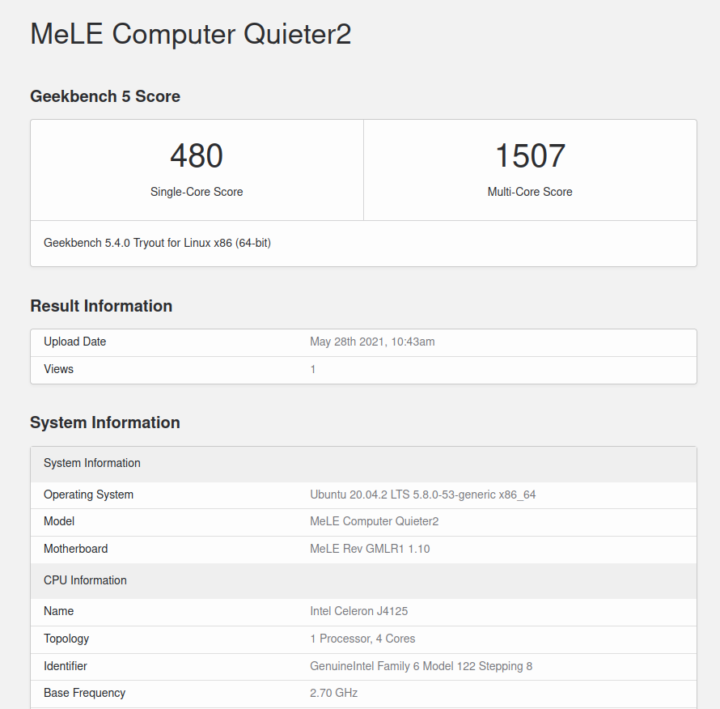
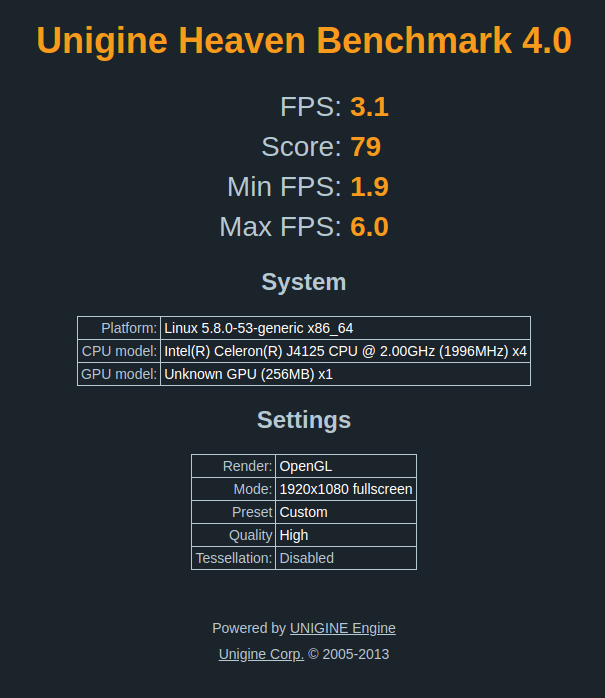
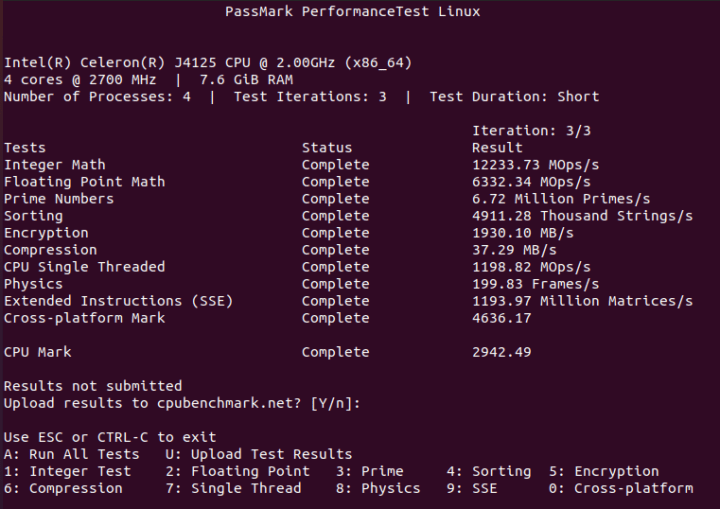
For the same set of Phoronix Test Suite tests the results were:
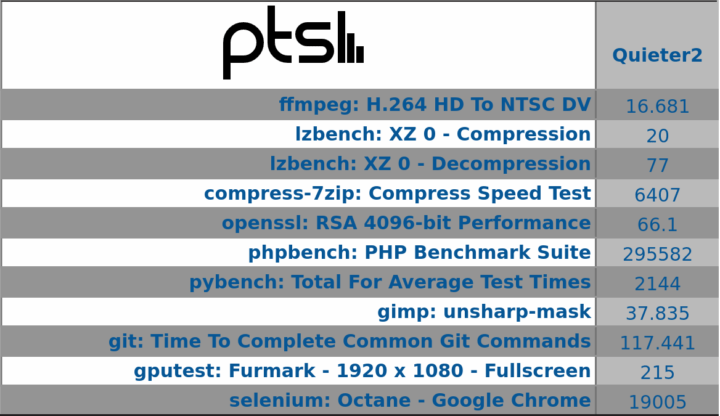
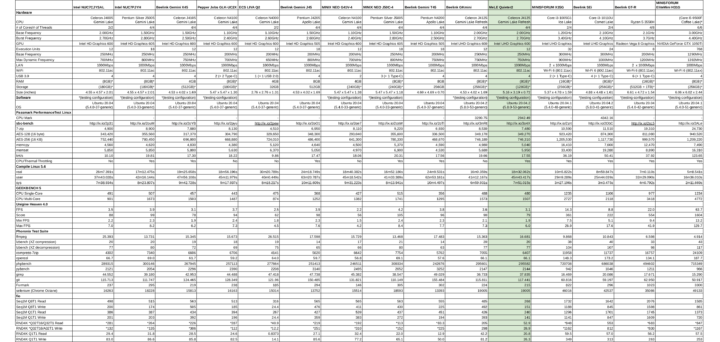
Browsers & Kodi
For real-world testing, I played some videos in Edge, Chrome and Kodi on Windows and in Firefox, Chrome and Kodi on Ubuntu. The following tables summarise the tests and results for each:
eGPU Gaming with MeLE Quieter2
As can be seen from the above Unigine Heaven scores the Quieter2 will only offer limited gaming performance using the iGPU:
However, as mentioned in the introduction this mini PC also supports an M.2 2280 NVMe SSD drive so I decided to test using an eGPU. The eGPU configuration has been discussed before, see Using an eGPU with a mini PC, and I used a GTX 1650 Super installed in ADT-Link’s R43SG ‘PCIe x16 to M.2 NVMe adapter’ together with a DELL DA-2 8PIN 12V/18A/220W PSU (aka Dell D220P-01) power supply:
Before revealing the results it is worth understanding the technical constraints of using an eGPU with MeLE Quieter2 mini PC. First, looking at the specification of the Intel J4125 Gemini Lake Refresh CPU shows that there are six PCIe lanes available for configuration however the PCIe revision is only 2.0:

This can be confirmed after connecting the eGPU:
and after installing the latest Nvidia driver shows it connected via ‘PCI Express x2 Gen2’:
and similarly in GPU-Z:
Running CUDA-Z gives an indication of the performance to expect:
I then ran a few graphical-orientated benchmarks including:
which showed promising performance so I then ran the in-game benchmark for Shadow Of The Tomb Raider (SOTTR) with low graphics settings:
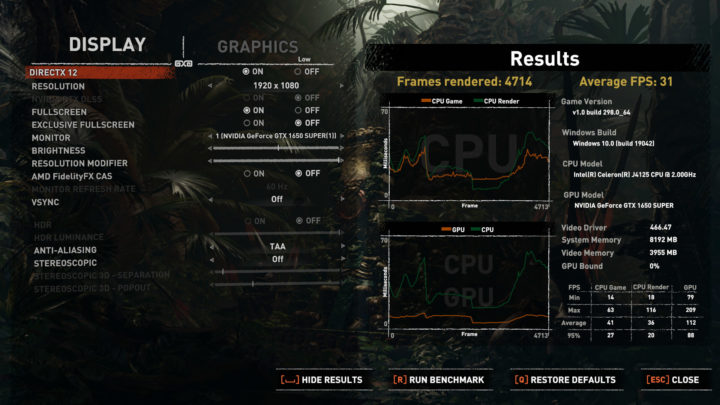
I then tried Counter-Strike: Global Offensive (CS:GO) at default (i.e. very high) settings and achieved around 52 FPS:
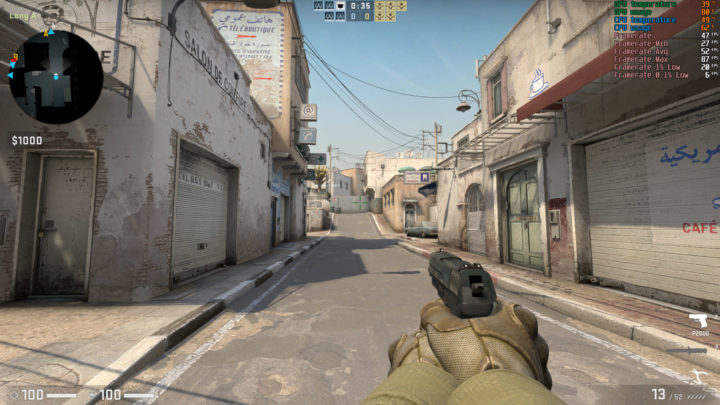
The reason for the poor performance in SOTTR is due to CPU bottlenecking. This can clearly be seen when monitoring CPU usage during the SOTTR benchmark:
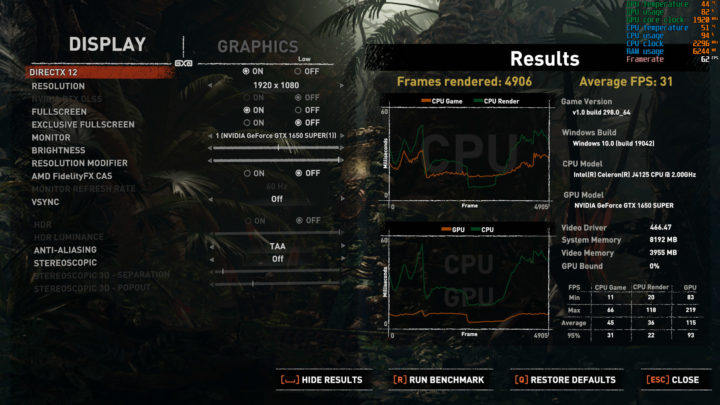
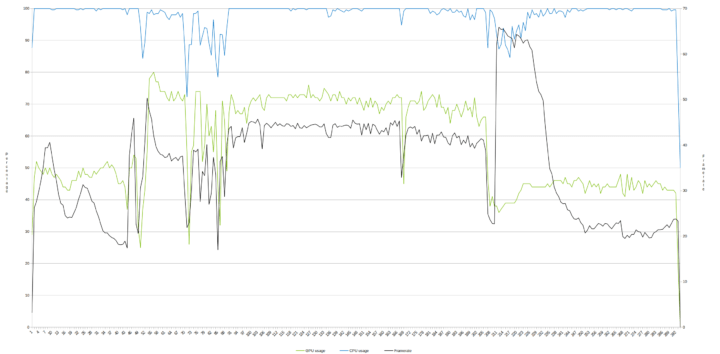
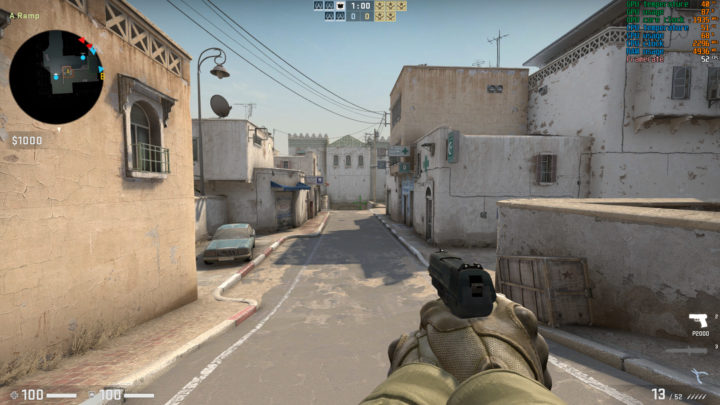
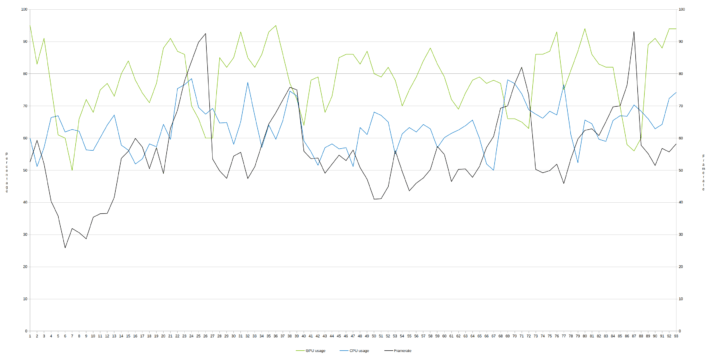
Adding an eGPU is therefore possible and will increase the gaming potential for the device but bear in mind the limitations and impact of the CPU on individual gaming performance.
NVMe Performance
Installing a Kingston A2000 1TB NVMe SSD showed up in HWiNFO as connected via PCIe 3.0 although with the correct link width of x2 and link speed of 5.0 GT/s:
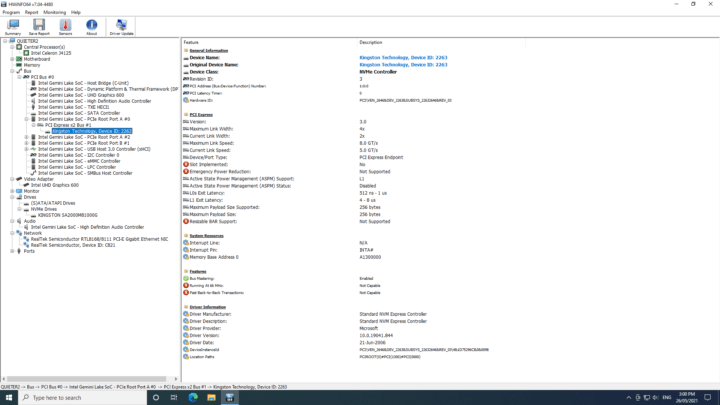
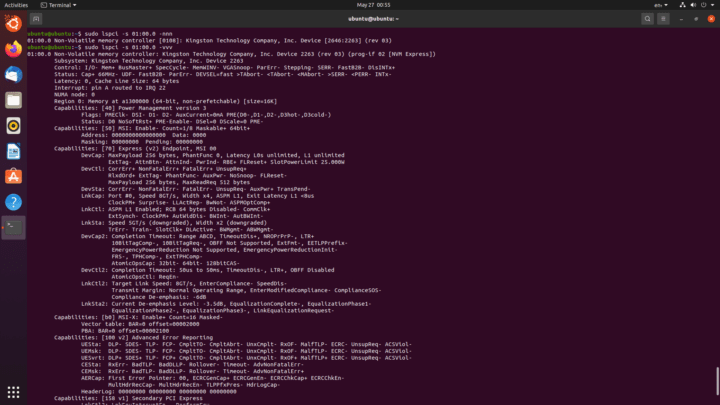
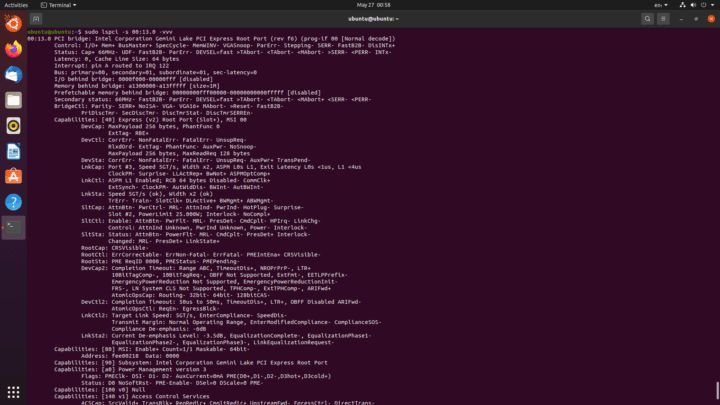
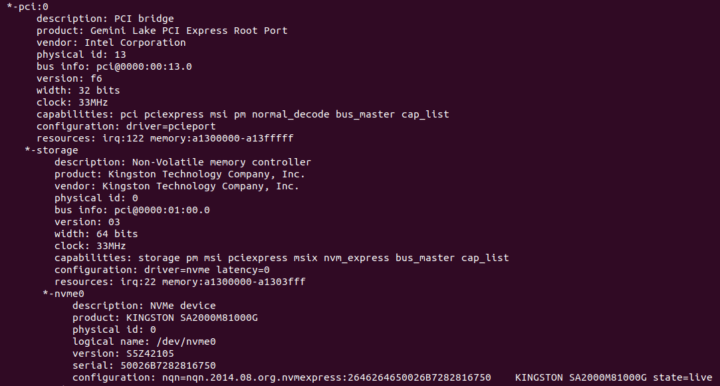
Windows vs Ubuntu
Whilst a detailed comparison between the two operating systems is beyond the scope of this review, it is worth noting some of the key findings I observed. Looking at the performance tools common between the two OS showed that they were reasonably evenly matched.
However, video playback on Windows runs much better than on Ubuntu and given the price includes a Windows 10 Pro license it probably doesn’t make too much sense to use the device as a Linux HTPC.
Thermals
The Quieter2 uses passive cooling and during benchmarking the maximum temperature I recorded on the top of the device was around 44.3°C in an ambient room temperature of 15.7°C and the device was not too hot to touch.
Running a stress test on Ubuntu saw the CPU temperature rise quickly to 51°C and then drop to 43°C before slowly climbing to a maximum temperature of 65°C:
The top of the device reached a maximum of 47.8°C during the stress test and the ambient room temperature was 14.1°C.
If the CPU frequency is monitored during the stress test it can be seen that the initial temperature peak is caused by the CPU running at 2600 MHz for the eight-second ‘PL1’ duration after which it drops to a consistent frequency averaging 2121 MHz to obviously prevent overheating:
Incidentally, the couple of temperature spikes during cooling were the result of two screenshots being taken with the first of which shown above.
Networking
Network connectivity throughput was measured on Ubuntu using ‘iperf’:
Power Consumption
Power consumption was measured as follows:
- Initially plugged in – 0.5 Watts
- Powered off (shutdown) – 0.0 Watts (Windows) and 0.0 Watts (Ubuntu)
- BIOS* – 3.5 Watts
- GRUB boot menu – 3.3 Watts
- Idle – 2.3 Watts (Windows) and 1.7 Watts (Ubuntu)
- CPU stressed – 7.9 Watts (Windows ‘cinebench’) and 8.4 Watts (Ubuntu ‘stress’)
- Video playback** – 5.6 Watts (Windows Edge 4K30fps) and 8.3 Watts (Ubuntu Chrome 1080p30fps)
*BIOS (see below)
**The power figures fluctuate so the value is the average of the median high and median low power readings.
As can be seen when looking at the Windows configuration the values for PL1 (8W) and PL2 (15W) are lower than similar but actively cooled J4125 mini PCs (10W and 25W respectively). The power limits can be adjusted either directly in the BIOS:
or using an application like ThrottleStop:
Rerunning some performance tests using the slightly higher values for PL1 and 2 showed only a marginal increase:
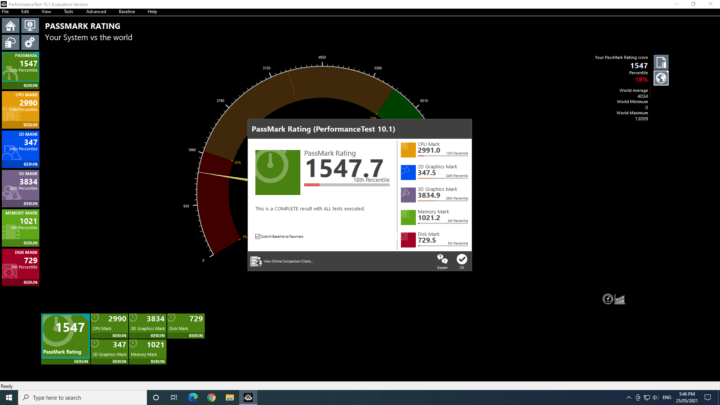
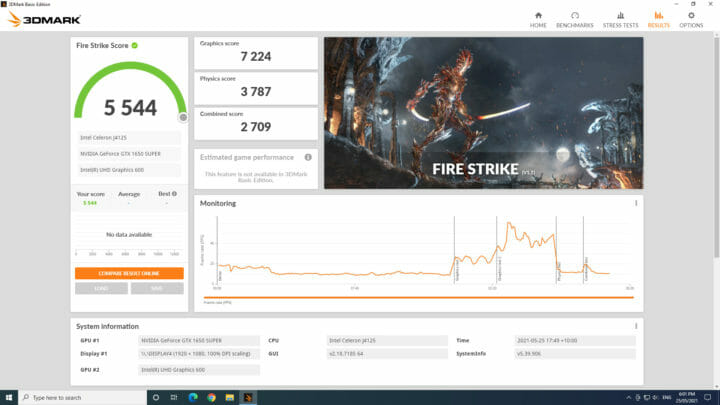
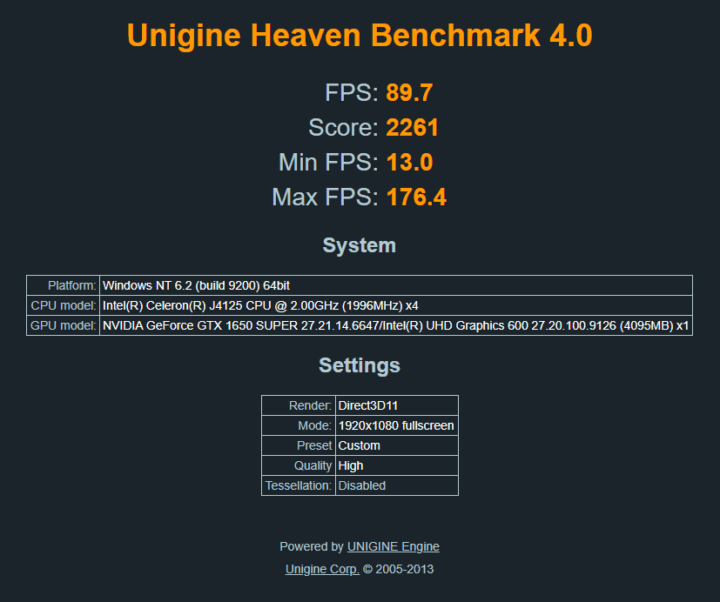
Quieter2 Drivers
On the MeLE website, there is a download link for all the required Windows drivers together with a modified Windows ISO which includes the drivers.
With my Kingston A2000 1TB NVMe SSD drive installed I used a standard Windows ISO and the MeLE drivers to make a clean installation to the M.2 drive using ‘Deployment Image Servicing and Management’ (dism.exe).
All devices were successfully identified:
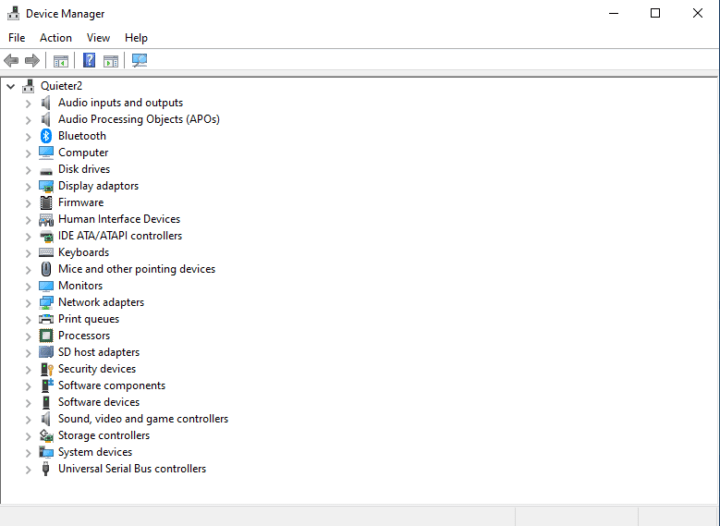
Quieter2 BIOS
After powering up the Quieter2 hitting the F7 key results in a boot menu which includes access to the BIOS. The BIOS is unrestricted:
Final Observations
Overall this mini PC is very good value for money and performs very well. It includes a Windows 10 Pro license, passive cooling, the inclusion of an NVMe M.2 slot (subject to technical limitations) and MeLE provides driver support.
| Highlights | Limitations |
|---|---|
| NVMe slot | Only PCIe x2 Gen 2 |
| Passively cooled (fanless) | CPU throttling |
I’d like to thank MeLE for providing the discounted Quieter2 for review. It currently retails at around $250 on AliExpress.

Ian is interested in mini PCs and helps with reviews of mini PCs running Windows, Ubuntu and other Linux operating systems. You can follow him on Facebook or Twitter.
Support CNX Software! Donate via cryptocurrencies, become a Patron on Patreon, or purchase goods on Amazon or Aliexpress


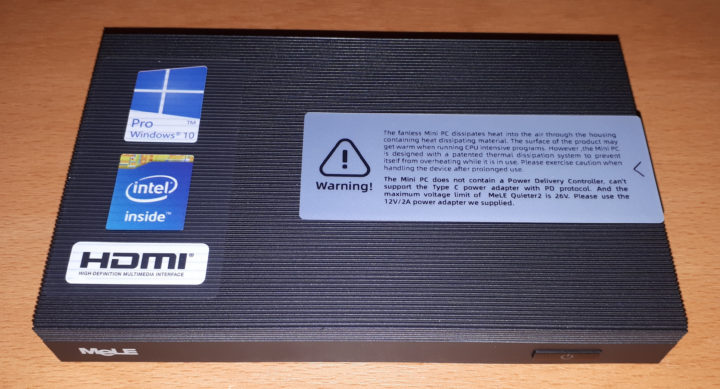
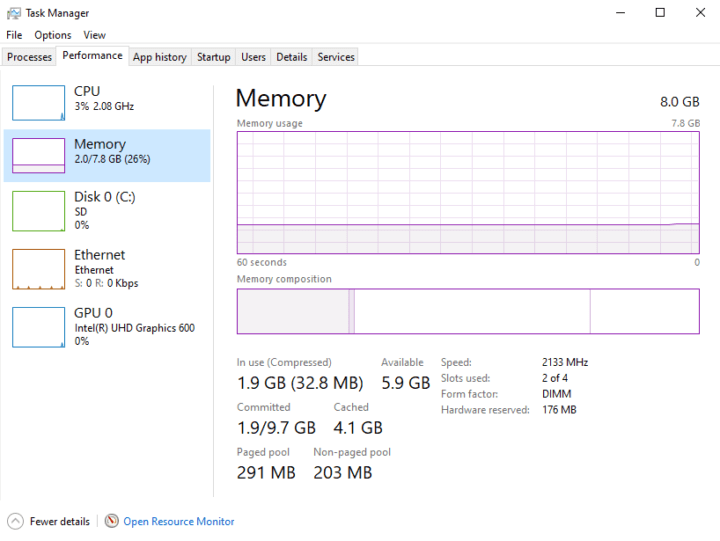
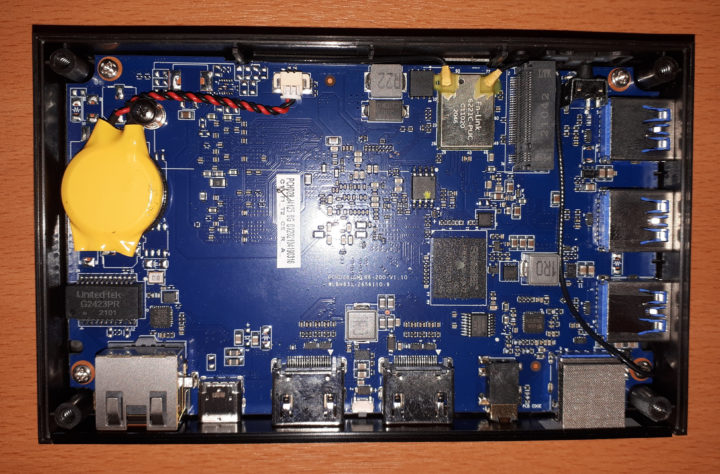
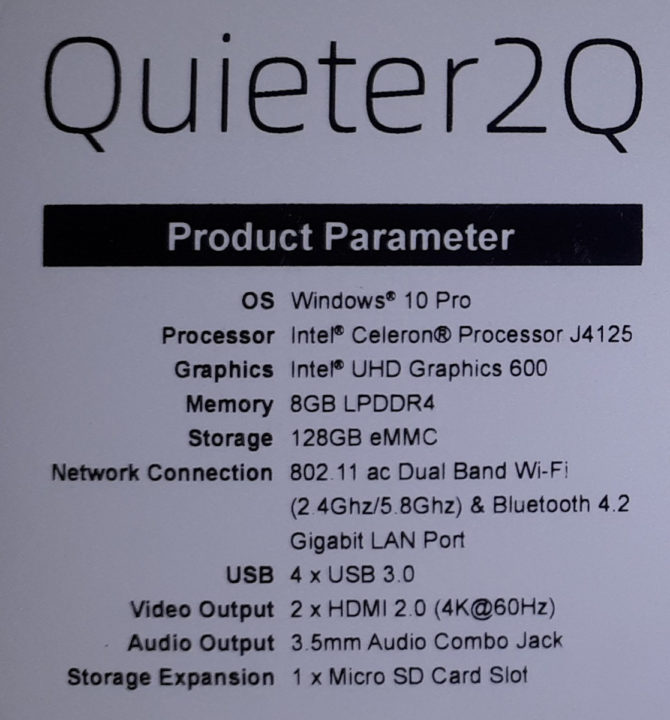
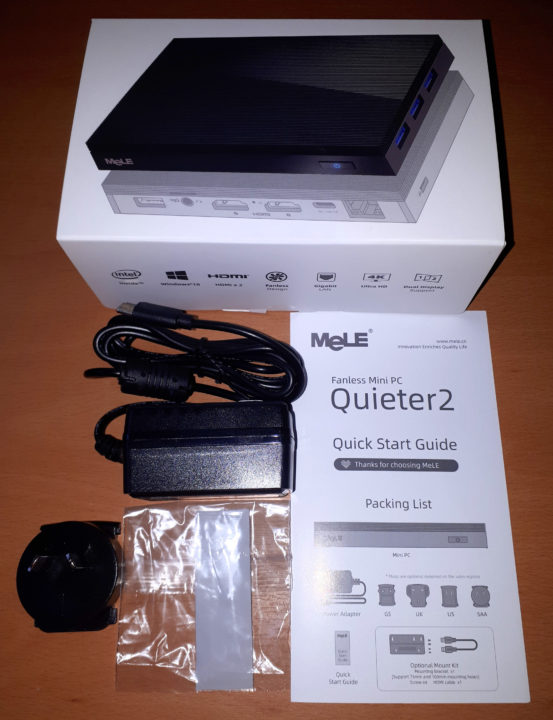

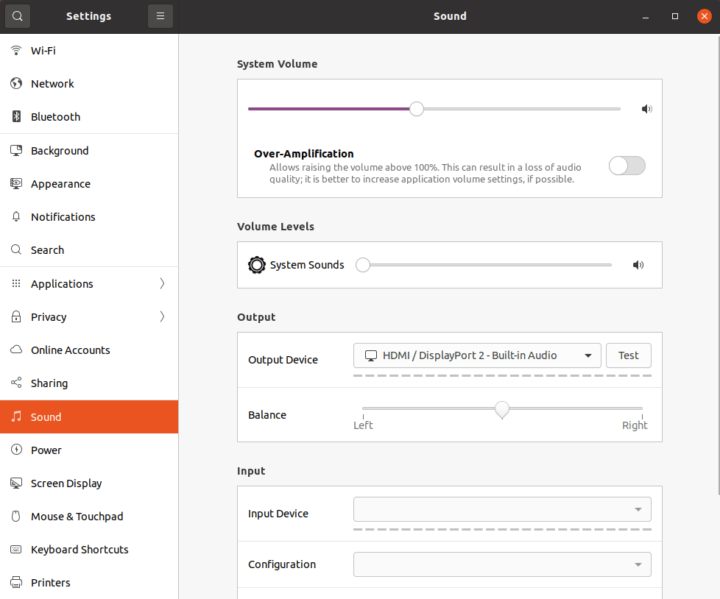
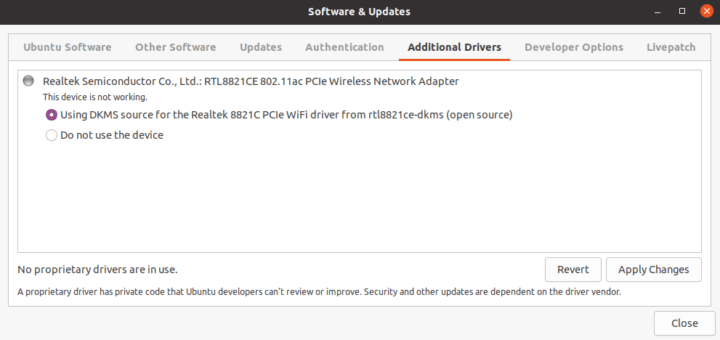
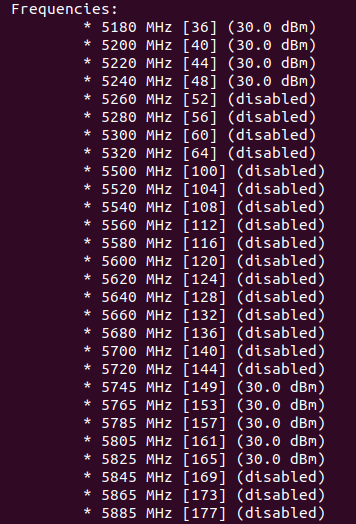
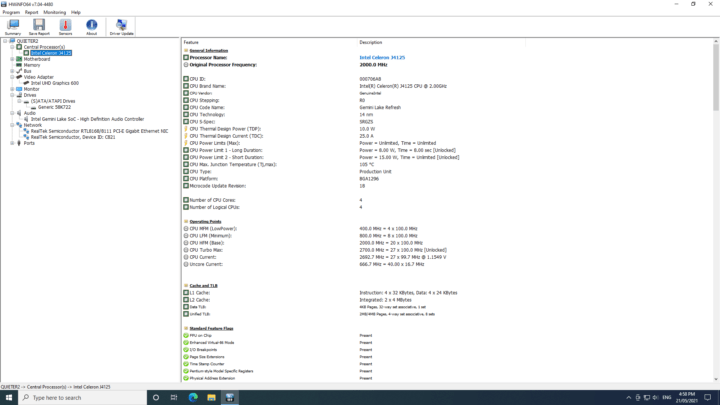
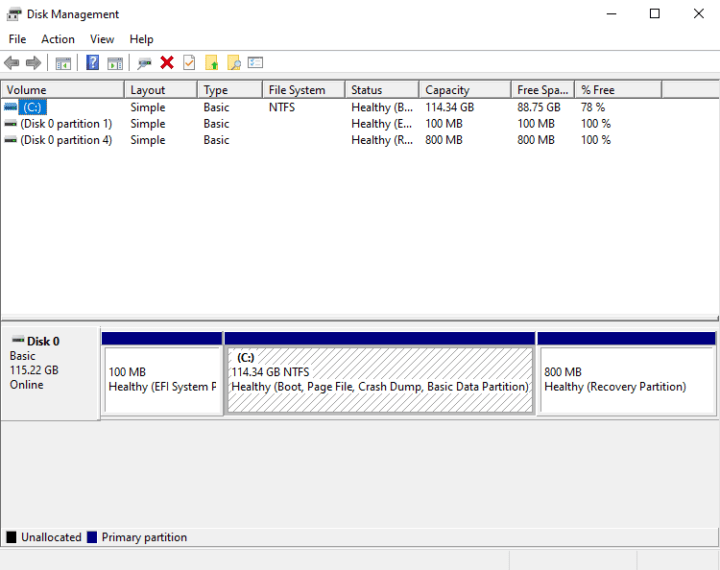
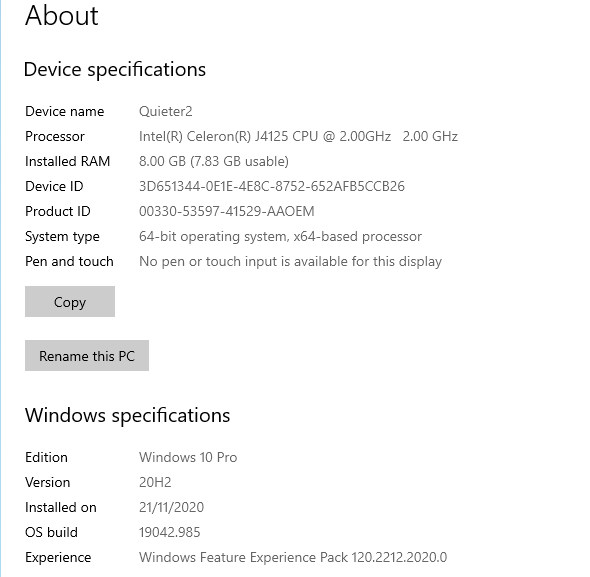
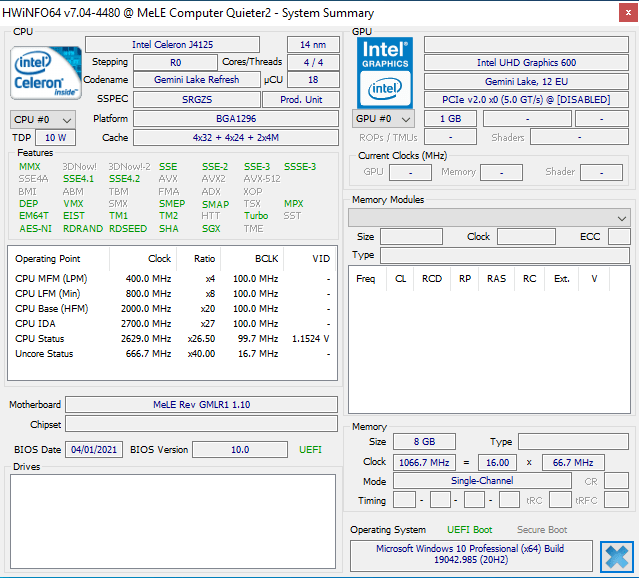
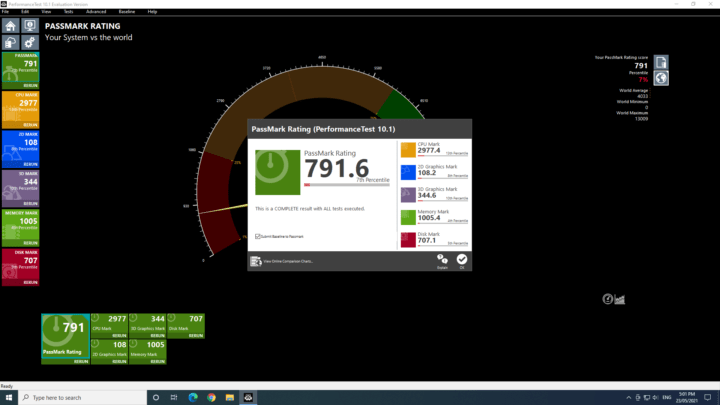
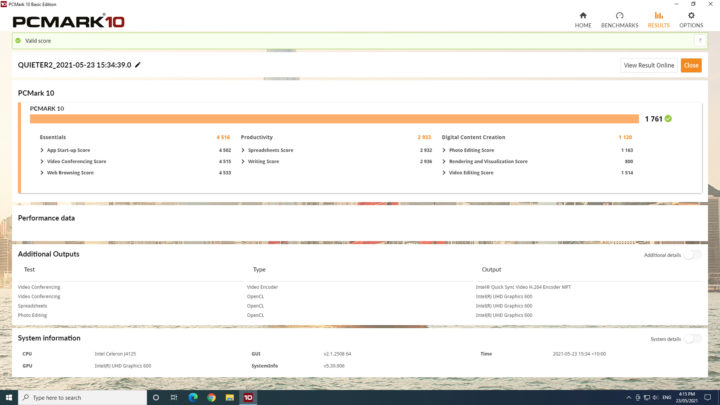
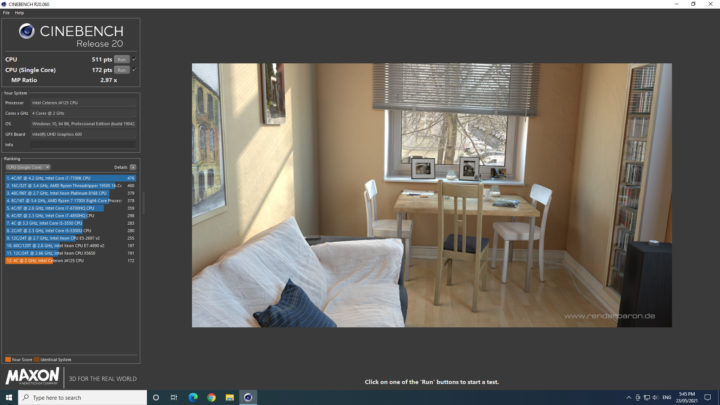
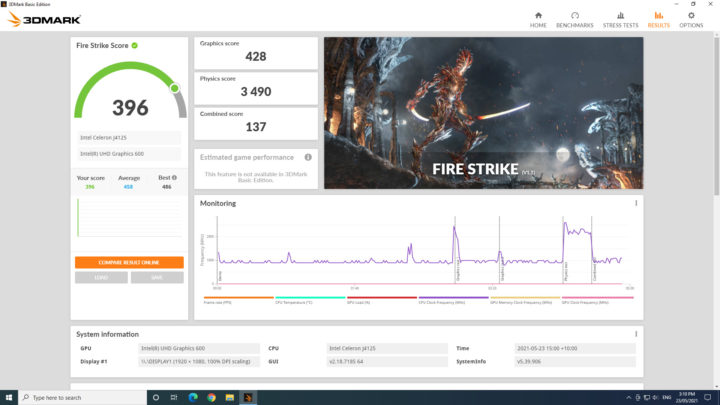
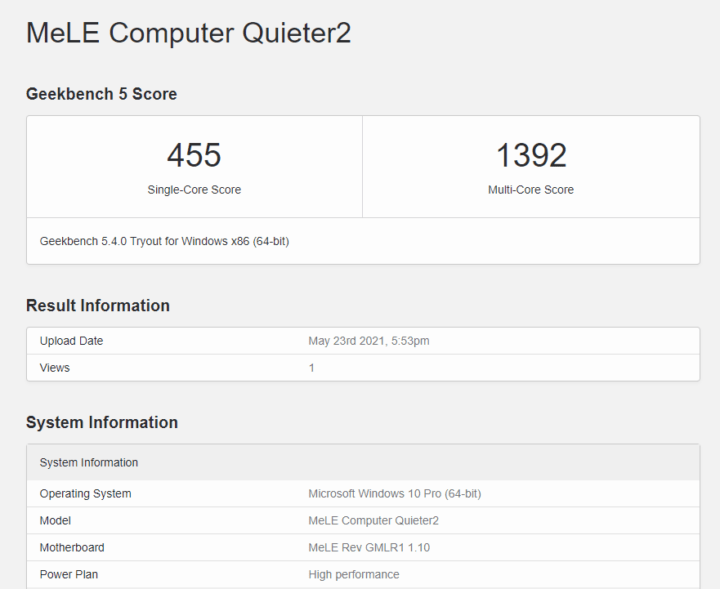
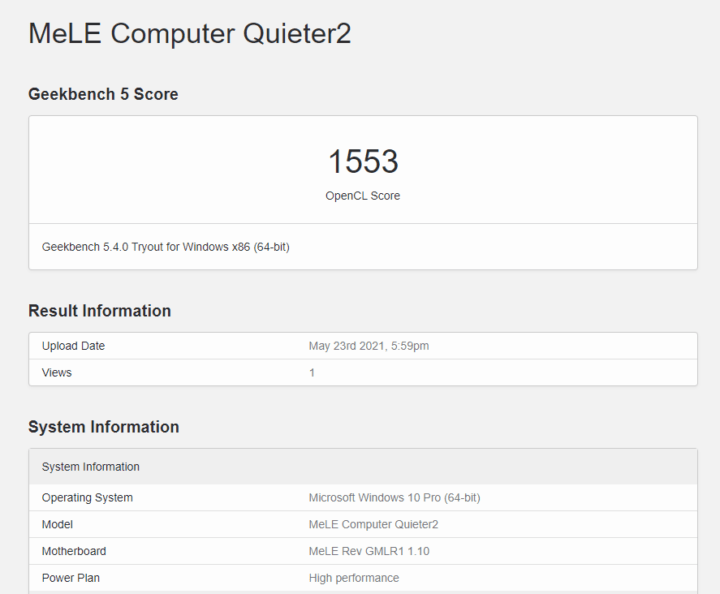
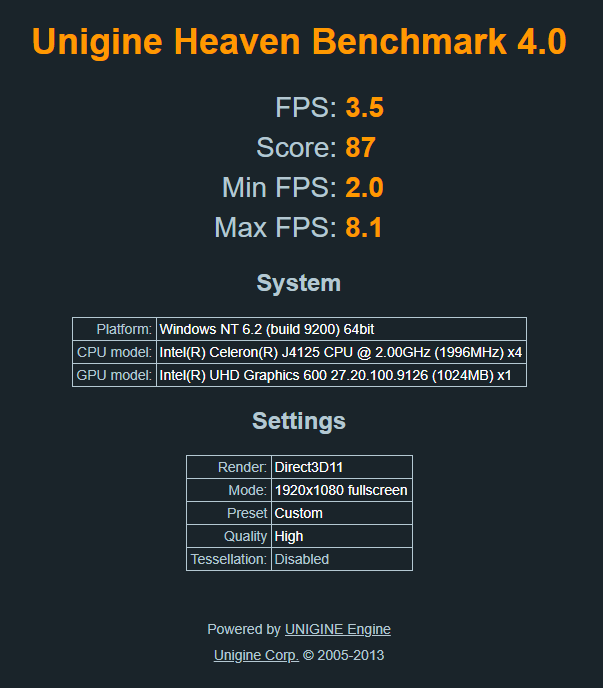
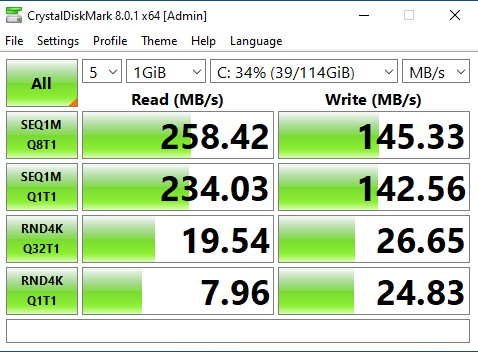
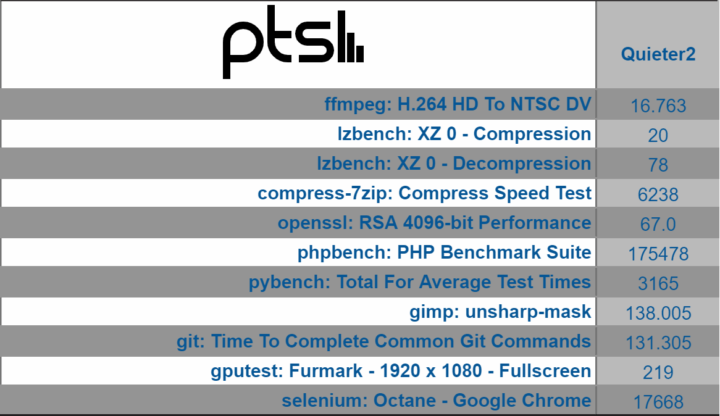
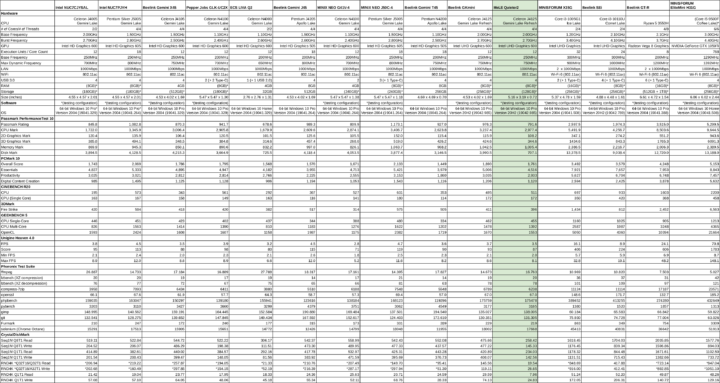
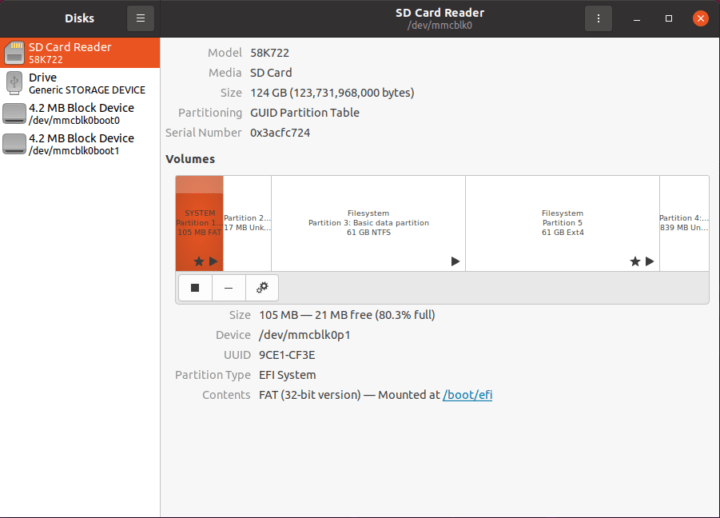
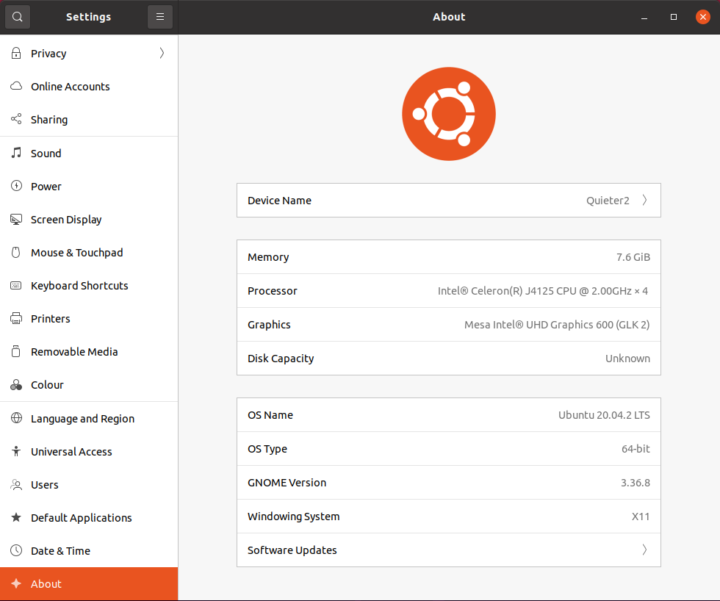
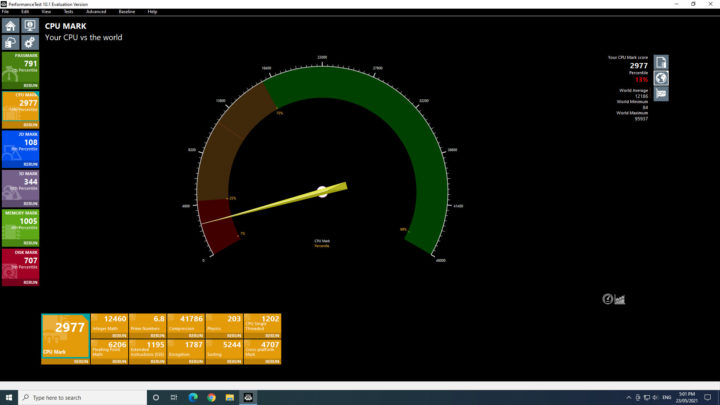
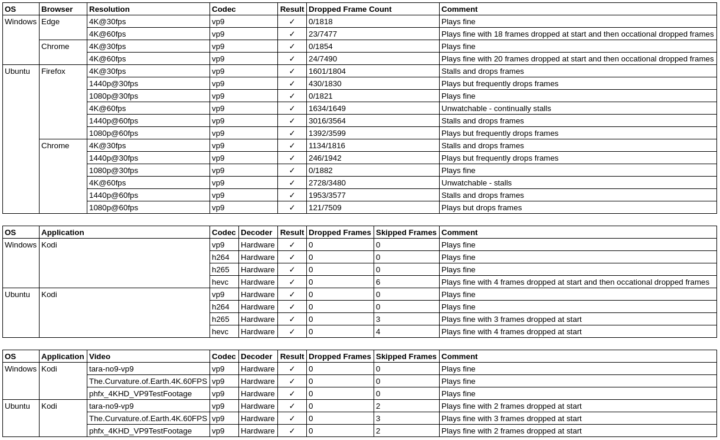
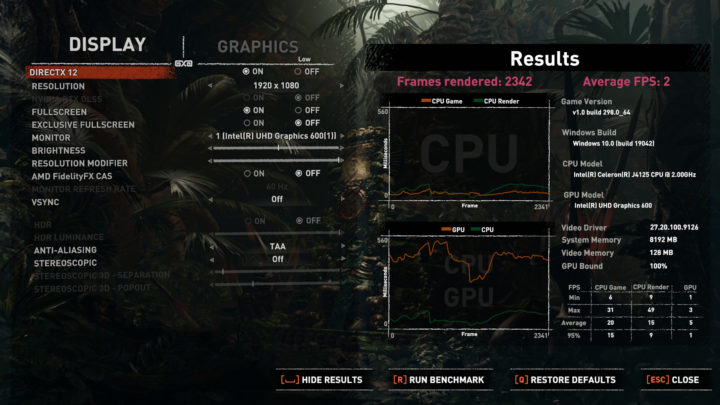
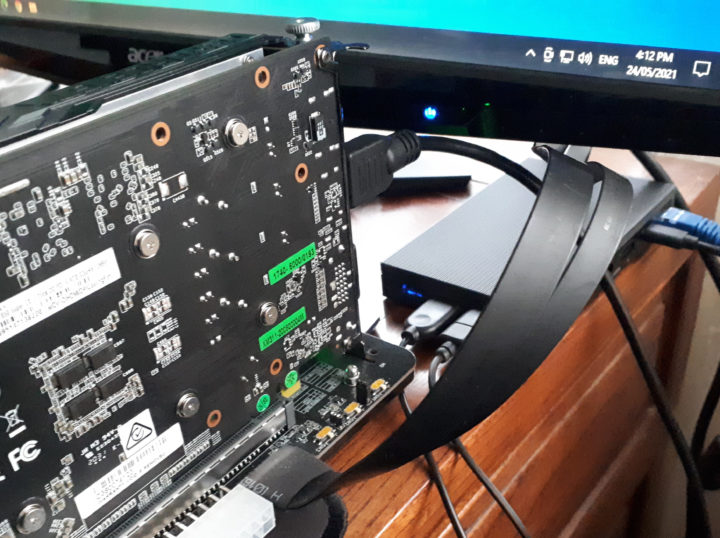
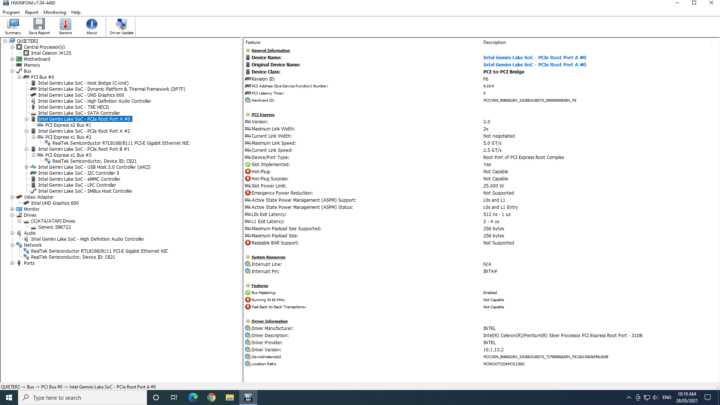
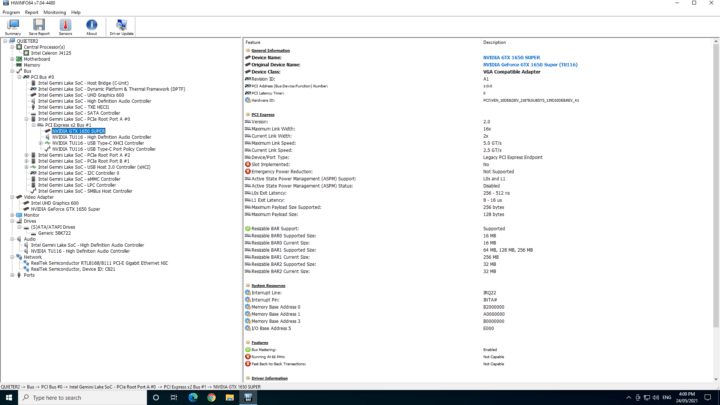
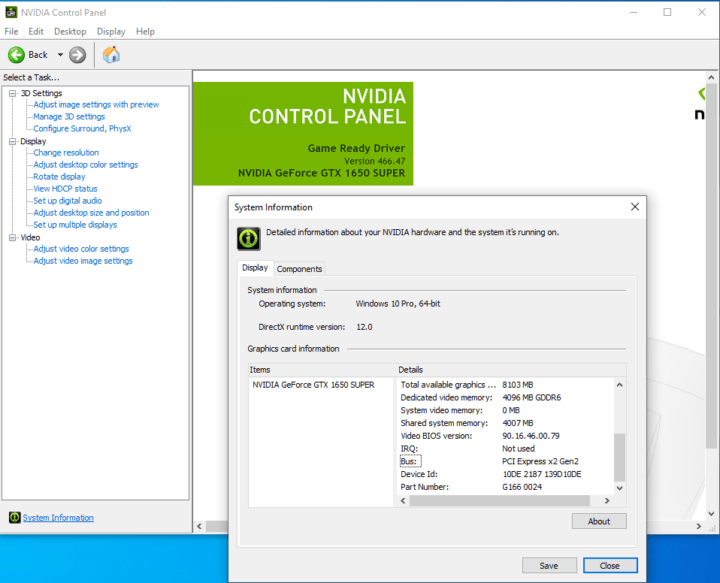
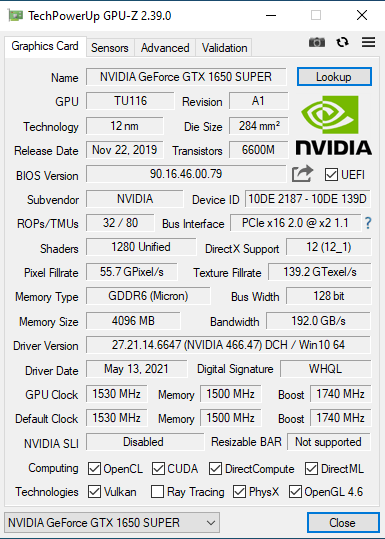
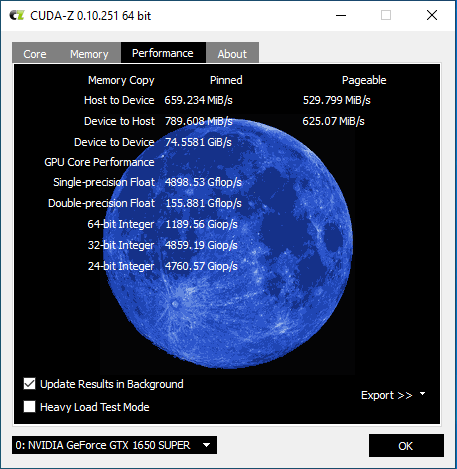
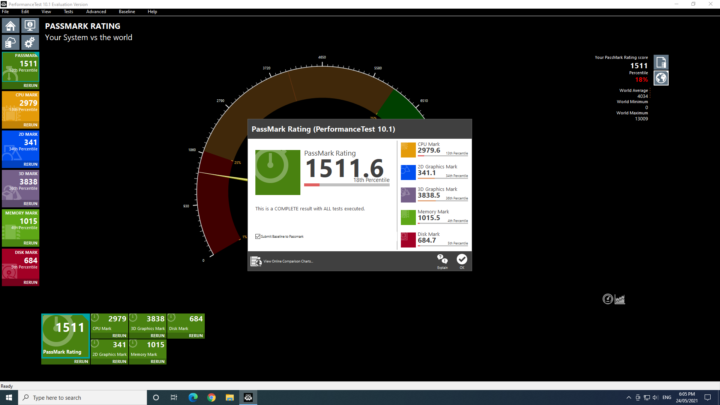
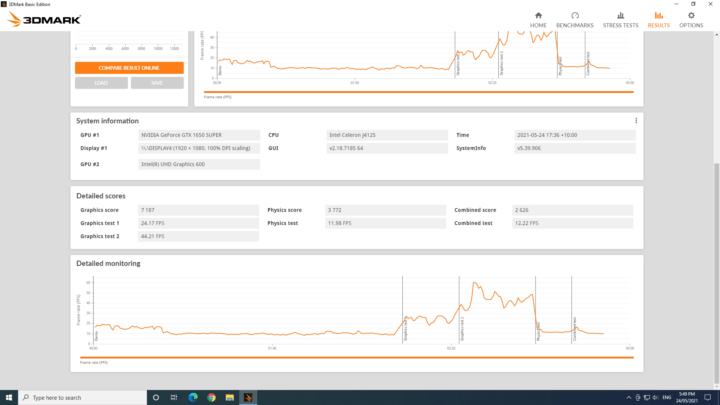
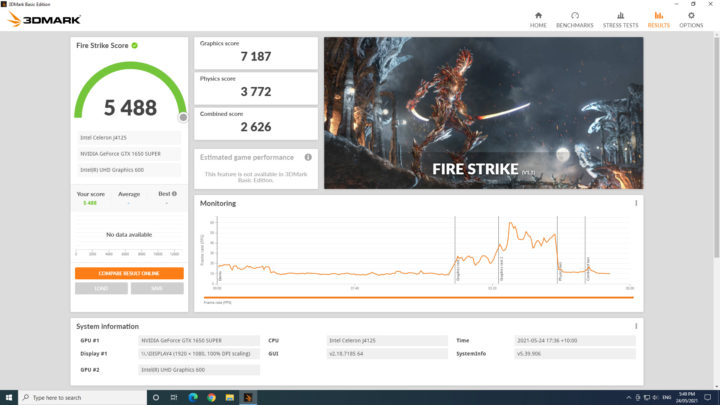
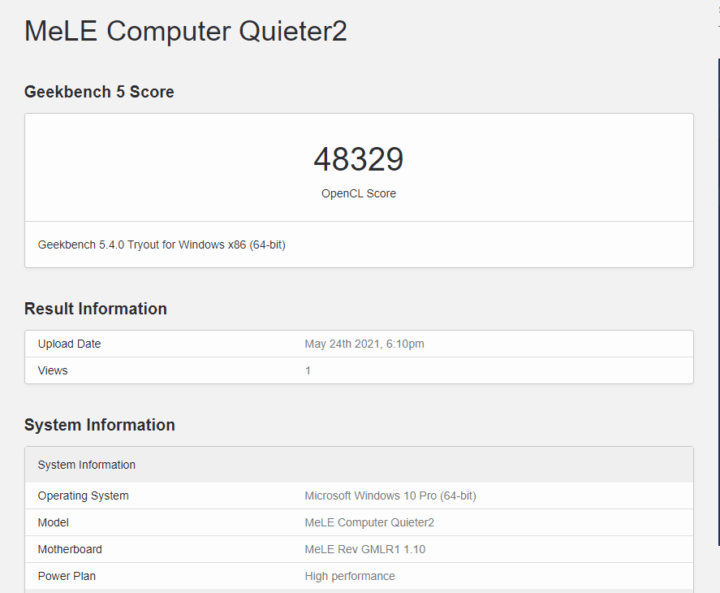
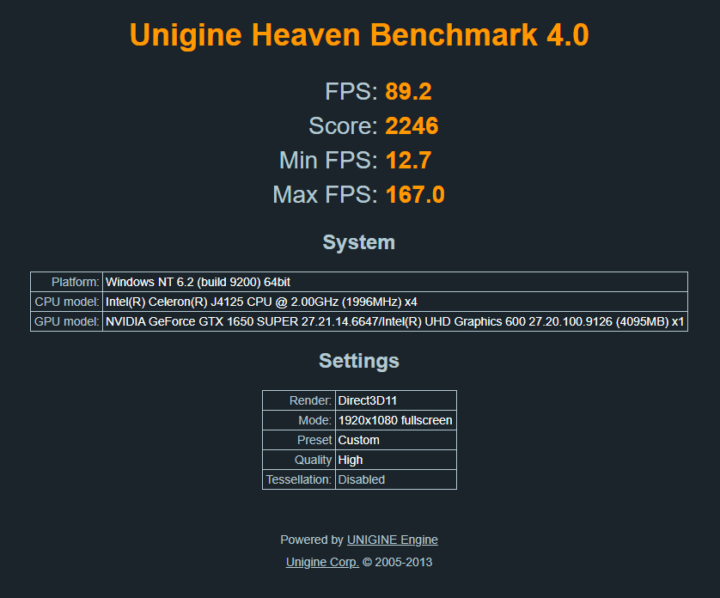
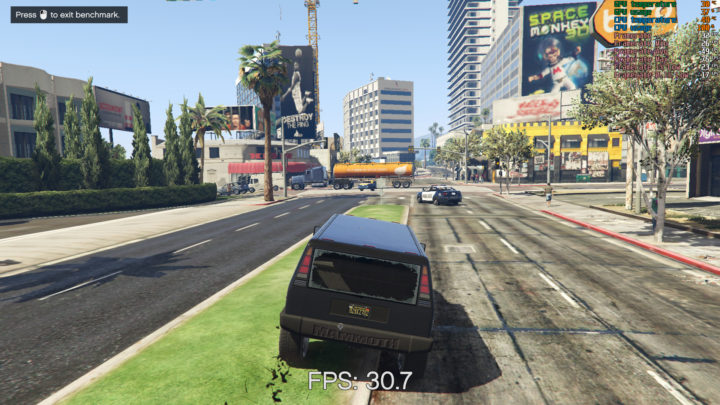
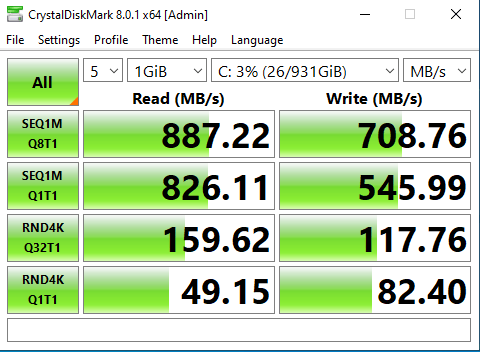
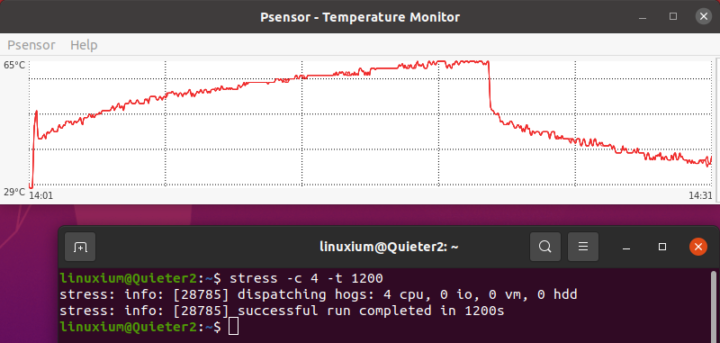
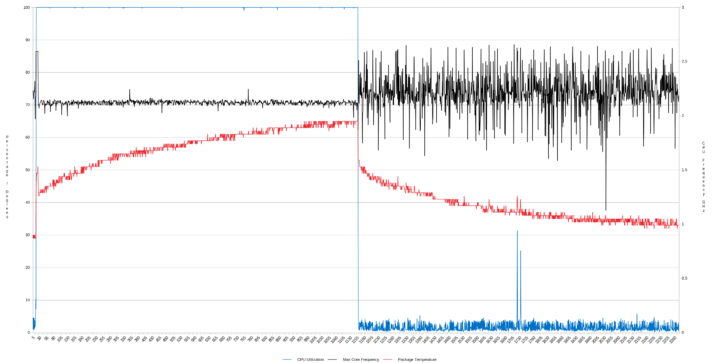

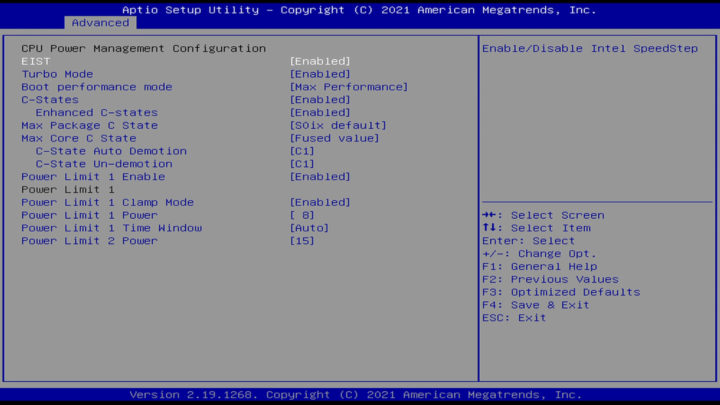
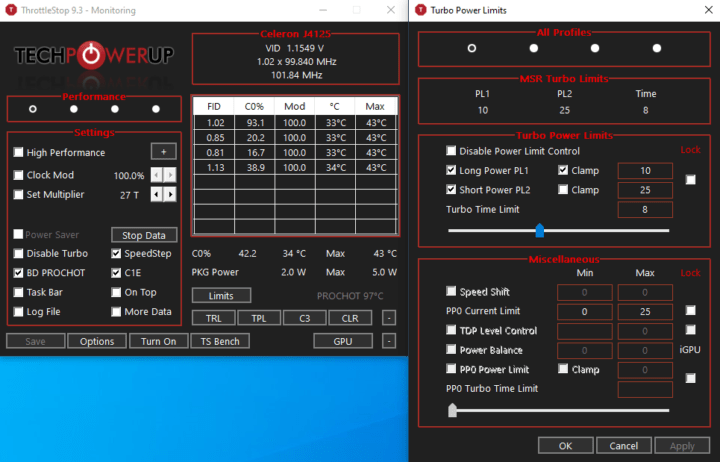
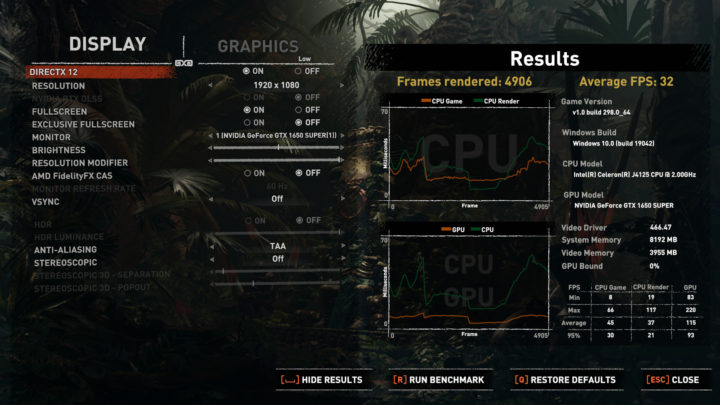
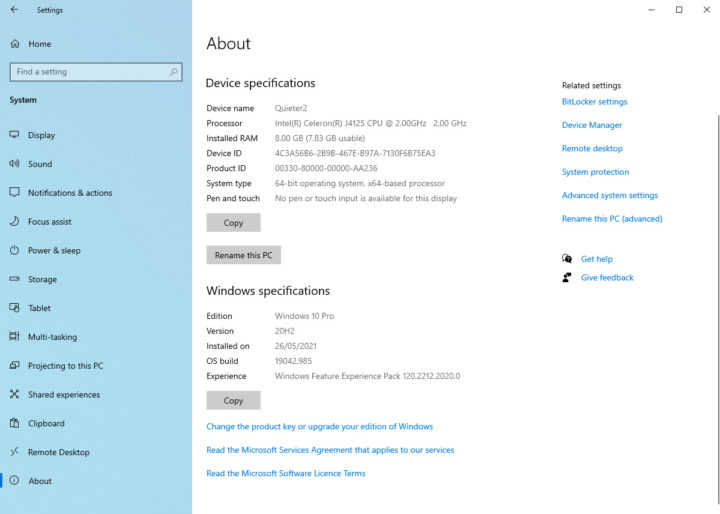
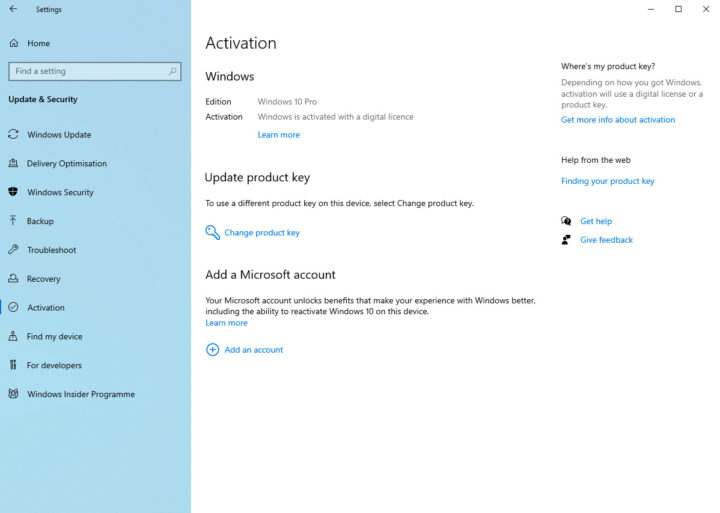
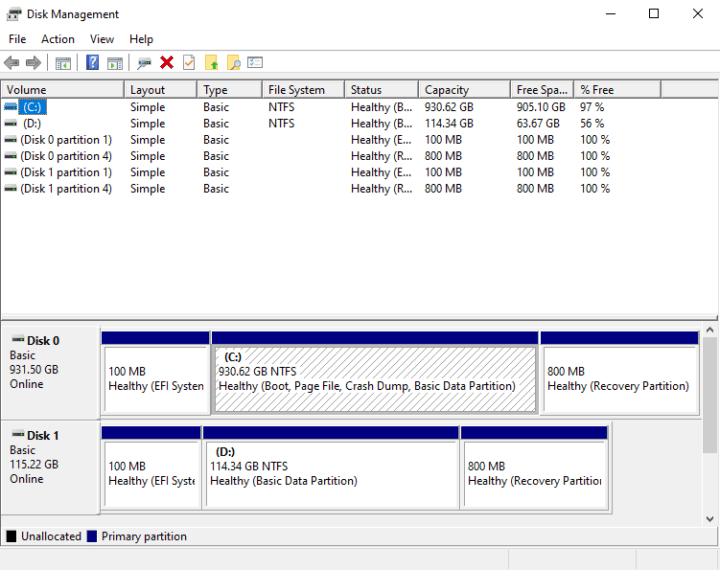



Can the Quieter2 be powered by USB-C charger with with USB PD (I assume it needs to support 12V voltage)?
Not according to the sticker shown in the top photo. 🙂
What did you do for BIOS settings to get the Quieter2 to boot from USB for your Ubuntu install? I’ve tried every BIOS setting imaginable. Also, I’ve created various bootable USBs using Rufus and Etcher with different settings with no luck. The USB stick will flash for a second when I try to boot from it and that’s it. No boot. I’m wanting to install Ubuntu on a separtate 256GB Sabrent 2280 SSD drive (I installed as soon as I received the Quieter2) and keep Windows 10 on the 128GB drive.
Thanks Much.
Initially my Ubuntu 20.04.2 LiveUSB created by simply ‘dd’ the ISO to USB didn’t boot properly as after displaying the GRUB menu selecting Ubuntu resulted in a black screen. I then changed the BIOS settings under ‘Chipset’ -> ‘Common Function’ -> ‘OS Selection’ from ‘Windows’ to ‘Linux’ and the LiveUSB booted without issue. However after that I changed the ‘OS Selection’ back to ‘Windows’ and my Ubuntu 20.04.2 LiveUSB still booted without issue so I assumed it was a one-off glitch. Try setting ‘OS Selection’ to ‘Linux’ and see if that helps.
What pc are you trying to install it on?
on Beelink J4125 i had to disable fastboot from win10 setting, then disable fastboot and secureboot on bios, enable USB boot.
on another mini PC i had to use linuxium isorespin script. google it.
on others there is a linux boot option in the bios.
I’m using the the Quieter2 mini PC. BINGO. It was the Common Functions Linux setting that opened the door. All is well. Now I just need to get it to see my WiFi. Thanks much!
Yes, Wi-Fi shows up during the install process. Thanks again!
How is the quality of wifi signal? I want to buy Mele Quieter2 as NAS server and since I watch movies in HD it will need streams of 60Mbps and my NAS Server is not in the same room with my WiFi router. So far I was able to achieve that only on 5Ghz network. In your experience so far is the WiFi signal strong and constant enough on Mele device?
Where can I buy it with the same 99% discount? 😉
8GB DDR4 memory … why single channel ?
The BIOS video shows at the 1:28 mark (https://youtu.be/77FUCrhIlQ4?t=88) that there are two 4096 MB modules in slot 0 and 1 for a total of 8192 MB – does this mean the RAM runs at dual channel?
There are four memory slots and up to two memory channels are supported however only one channel is active (wired with slot 0 and 1) so it is running in single-channel mode – visually confirmed by HWiNFO64 picture.
I see. Thanks. So if they had put the two 4 GB modules on Slots 0 and 2, then it would have been dual channel. Pitty they chose to do it this way, but probably made most sense from design/cost point of view.
Thank you for this complete review! I have just got my Quieter2 today and played a little with it.
With your article dated from June, did you get any news observations about it if you continued to use it? I was wondering if you did find an option in the bios to disable the eMMC drive if you use an NVMe drive? Did you have specific to do for installing the official Windows 10 OS with their drivers from USB?
I’ve nothing more to add to the review at this stage having further tested with eGPUs. Also I don’t disable the eMMC when using the NVMe drive and I installed Windows with their drivers using a script I’ve developed which uses DISM simply because I install Windows so often.
Does Quieter2 support auto power-on after power loss? I would like to use it as a mini server for home automation.
Is the option covered in the BIOS video what you are looking for?
I did look at your video and the closest option I could find is “Auto power-on” under the Chipset tab. But I’m not sure if it’s related to power loss or some sort of remote power-on. When you highlighted that option, the description on the right doesn’t provide any additional info. On my computer’s BIOS it’s called “Power loss recovery”.
It is my understanding that if power is lost and ‘auto power on’ is set then the device will start. However the success of a restart would be dependant on there being no corruption caused by the initial power failure.
Thanks, I think you are correct. In their marketing material they list “auto power on” as one of the features. So, it must be power loss restart.
I was planning to ditch the Win 10 that came with this machine and just run Kodi in Ubuntu.
Perhaps the most important tip I got from this:
“However, video playback on Windows runs much better than on Ubuntu and given the price includes a Windows 10 Pro license it probably doesn’t make too much sense to use the device as a Linux HTPC.”
Thanks heaps.
Hey man, would you be able to help out… Got the same setup but running pfsense. Used the m2 adapter to add in an intel82576 dual network card and it doesn’t seem to be recognizing it on the bios or on pfsense. The card does light up, any tips on setting the BIOS settings for it to work?
Hi Ian
Is there a difference between quieter 2 and quieter 2q?
None that I’m aware of.